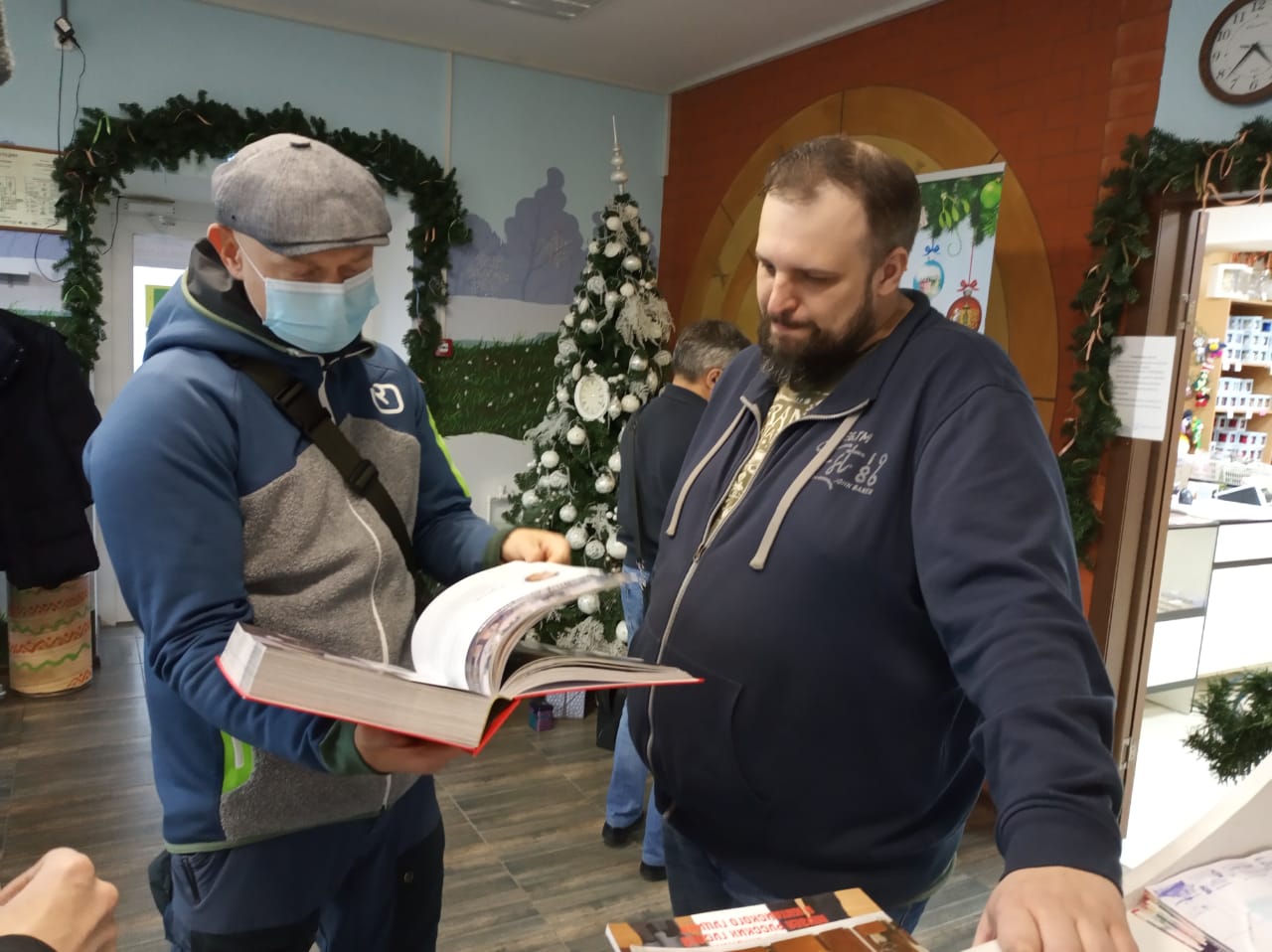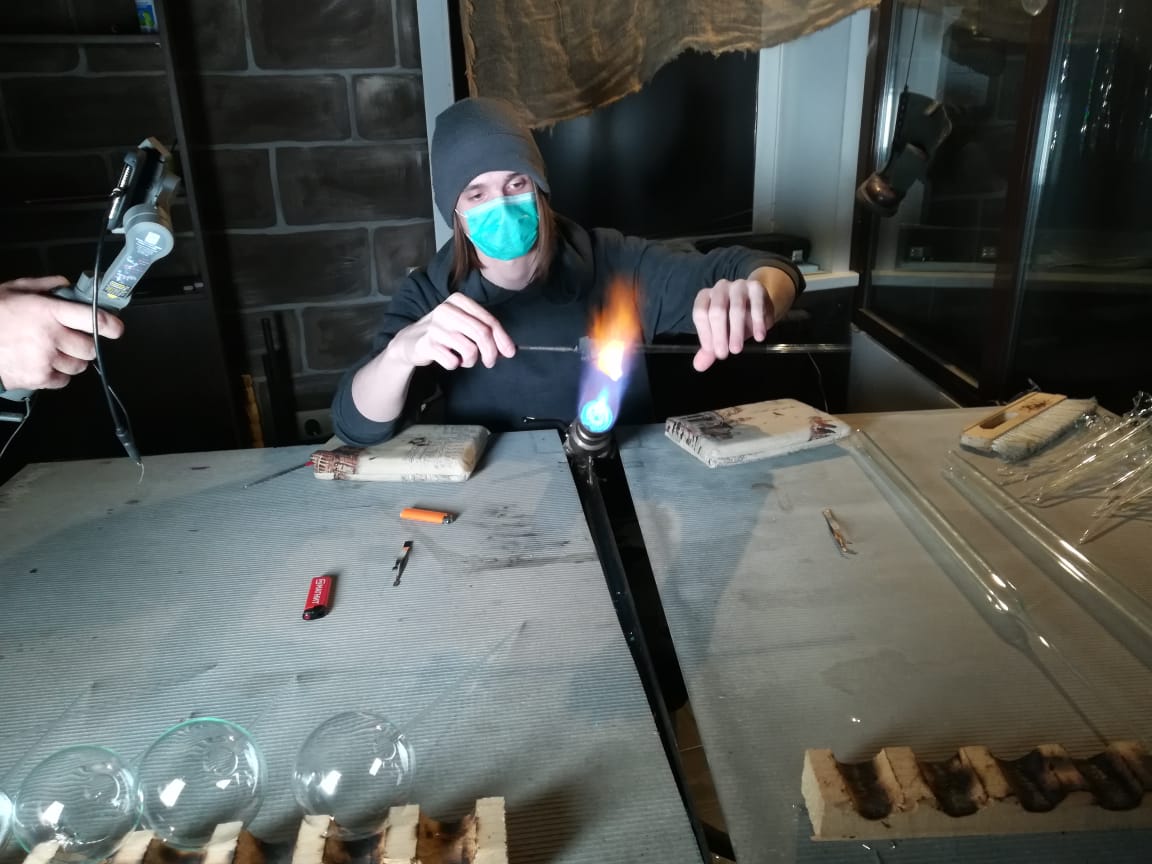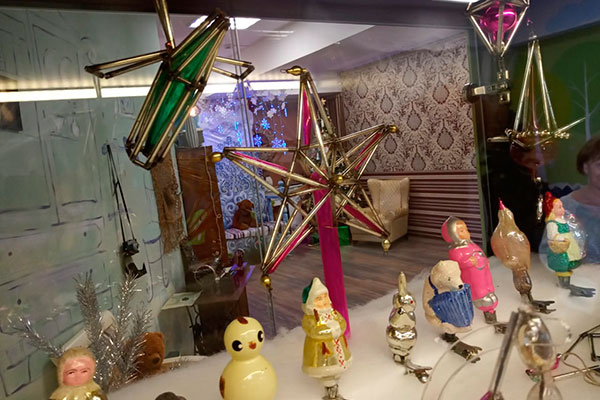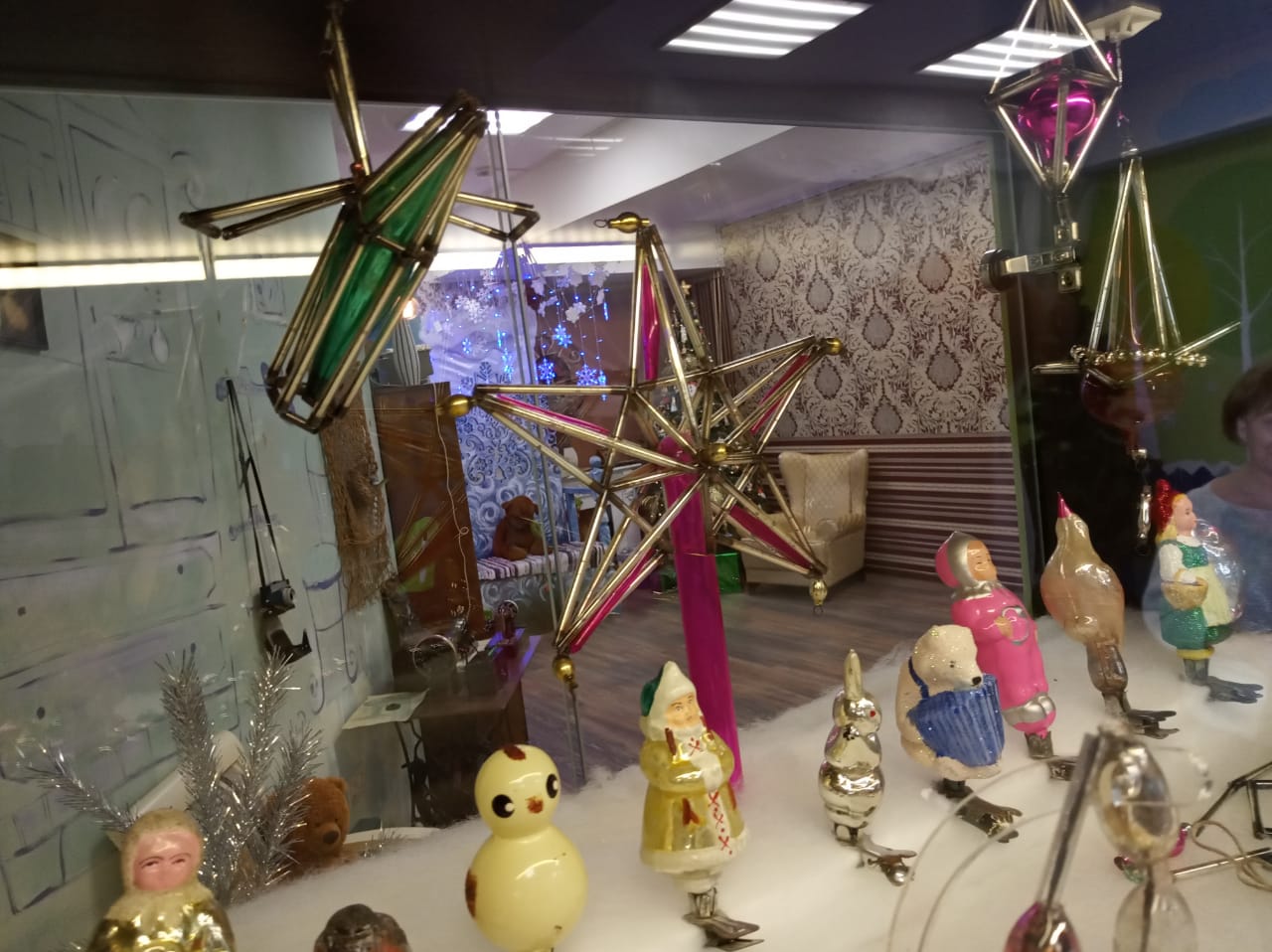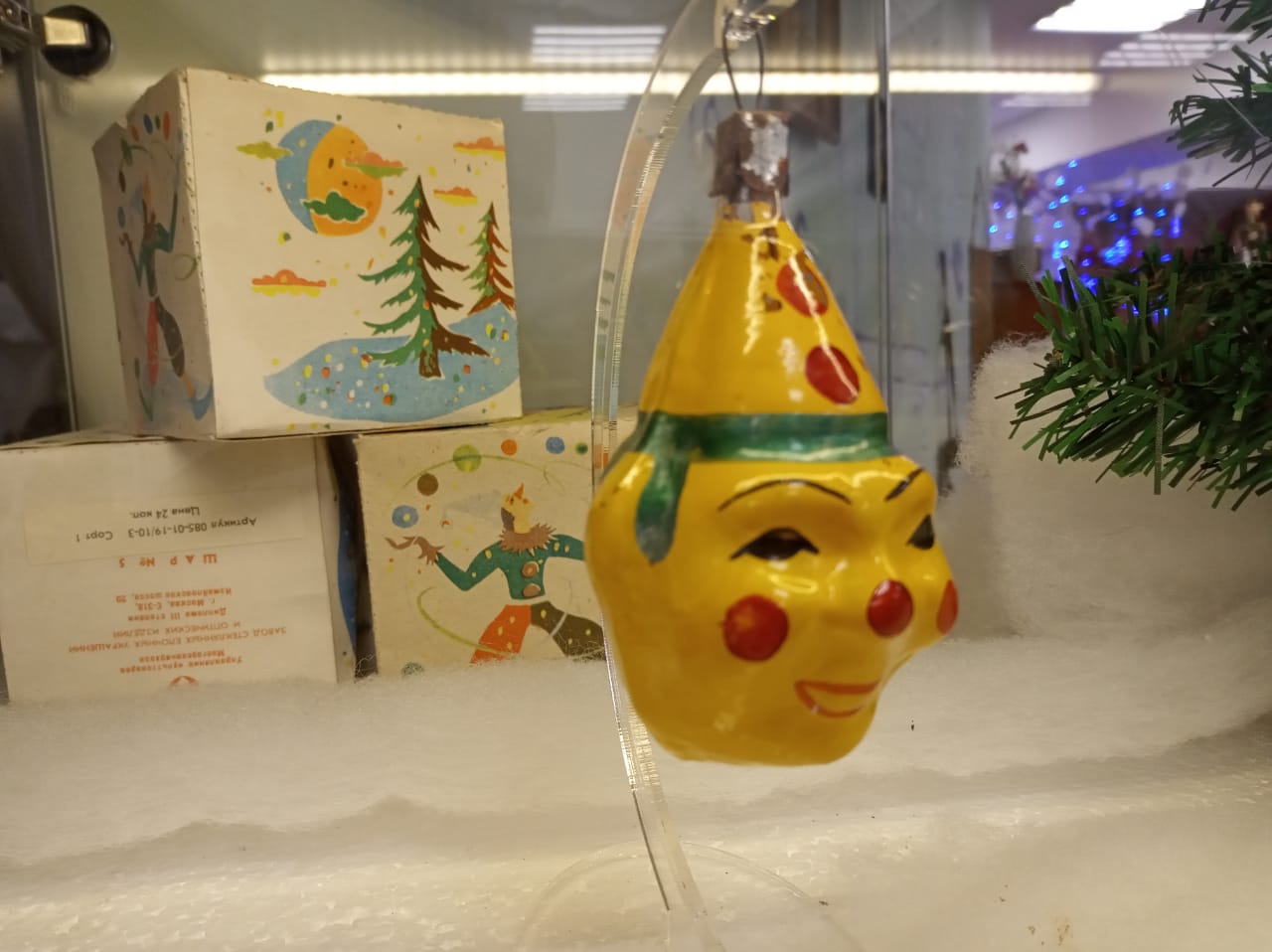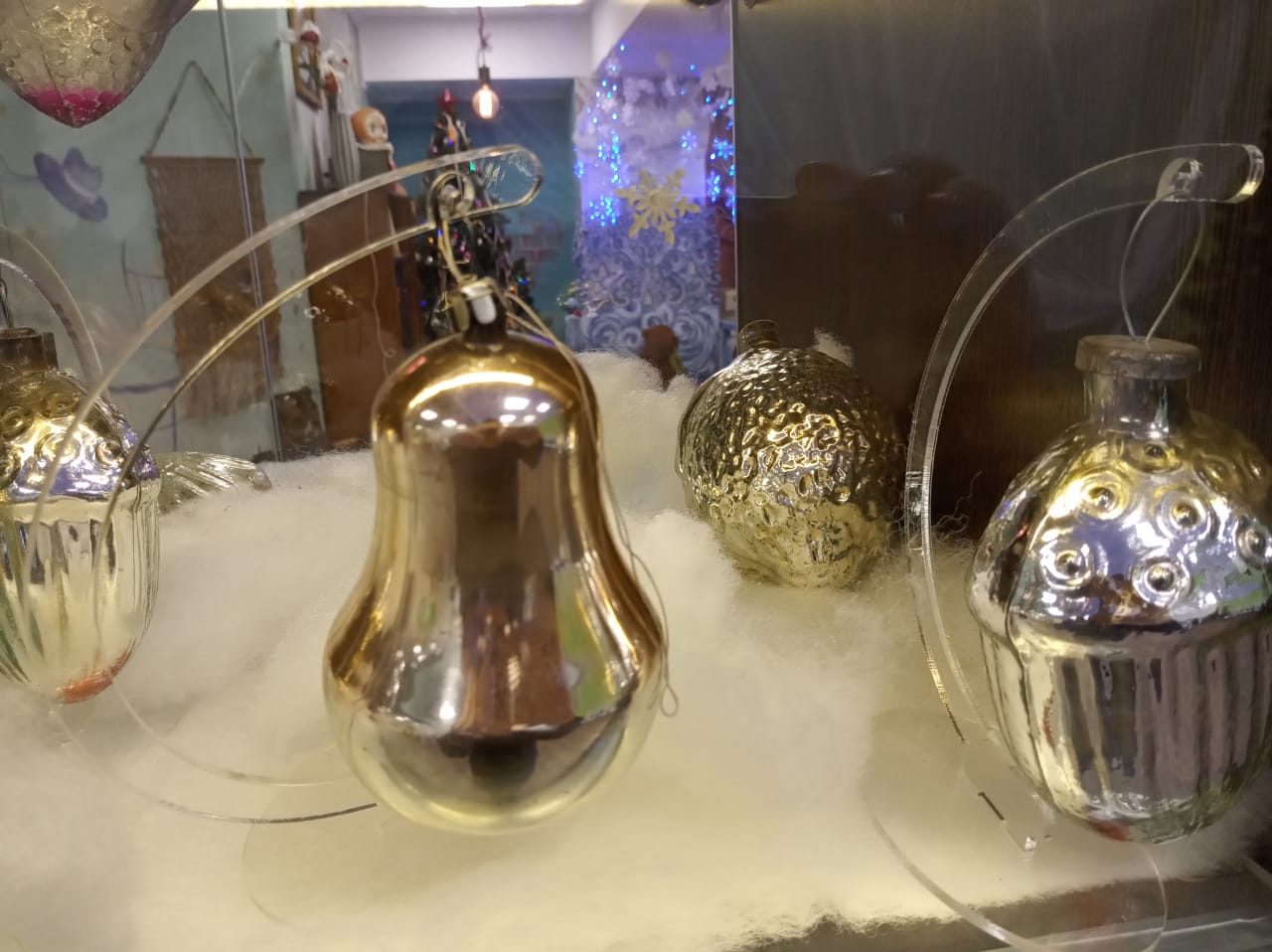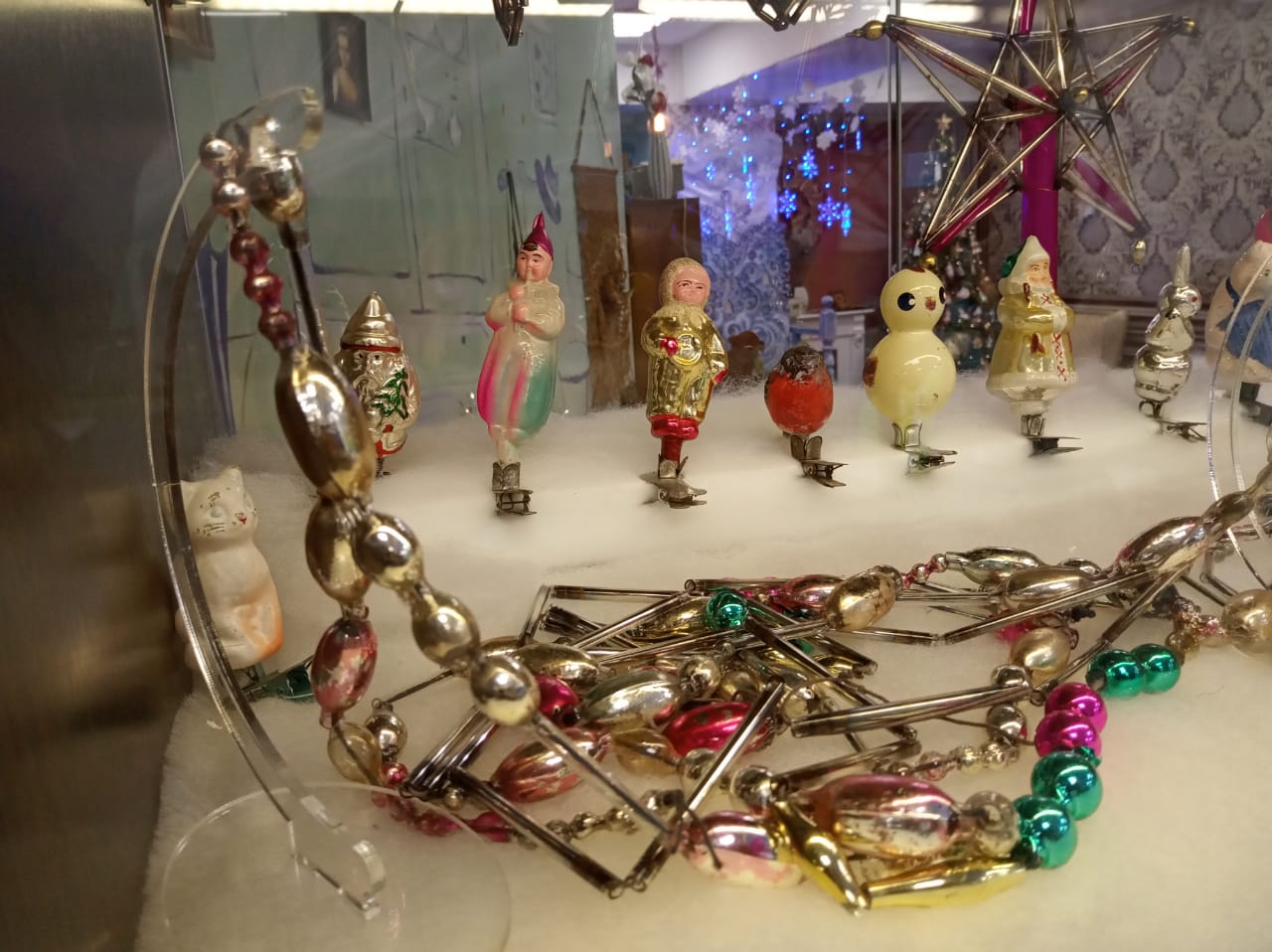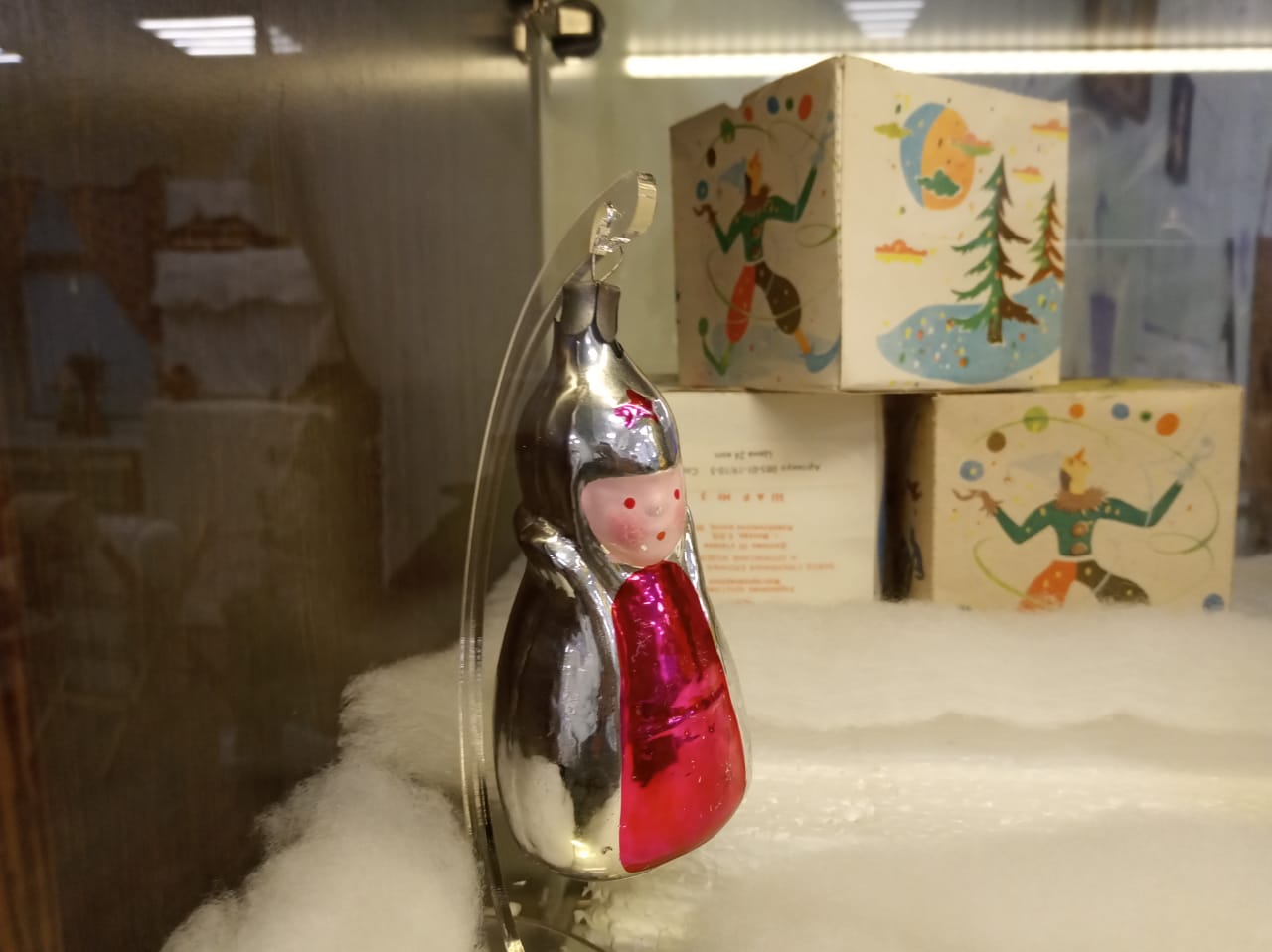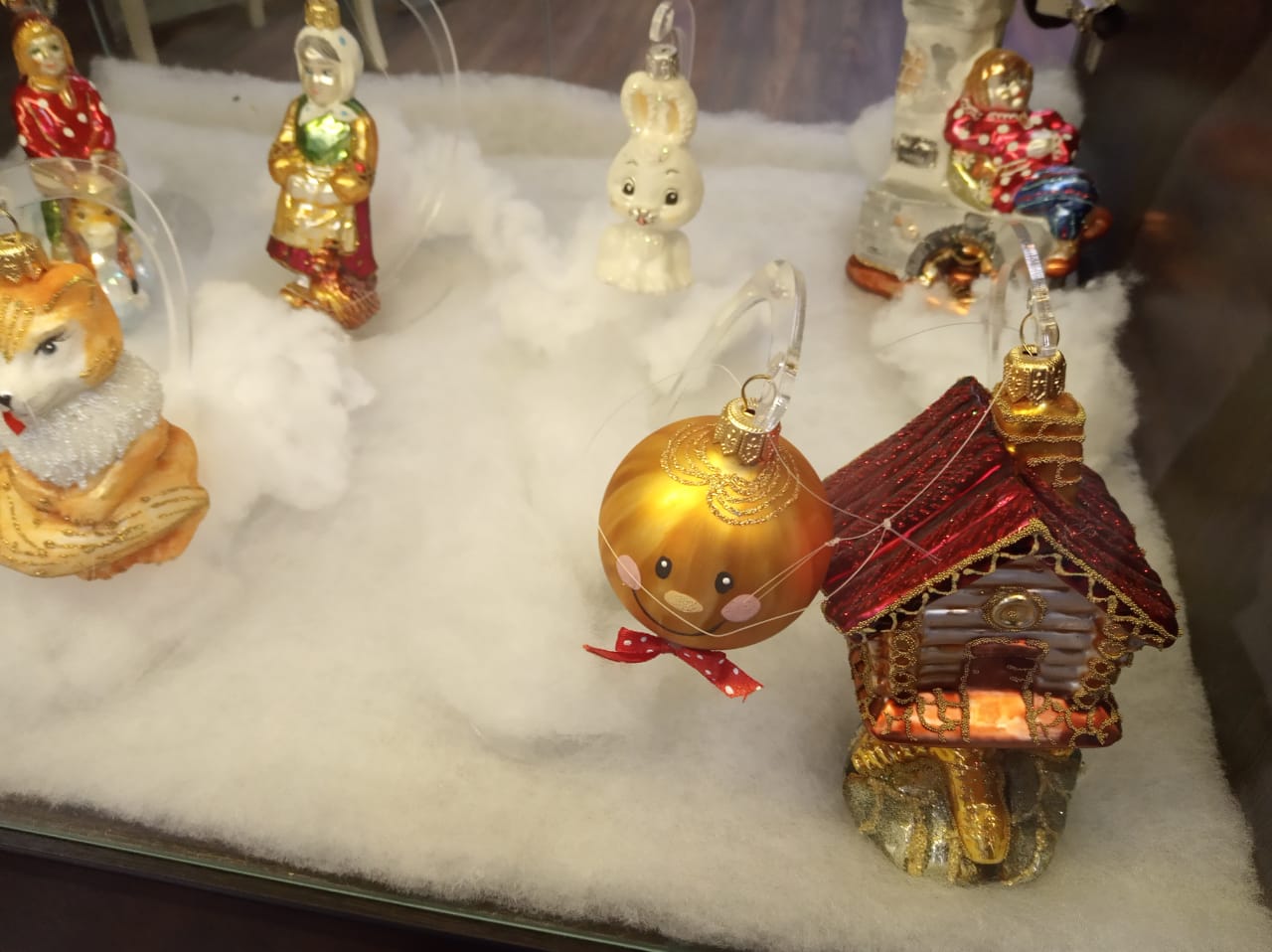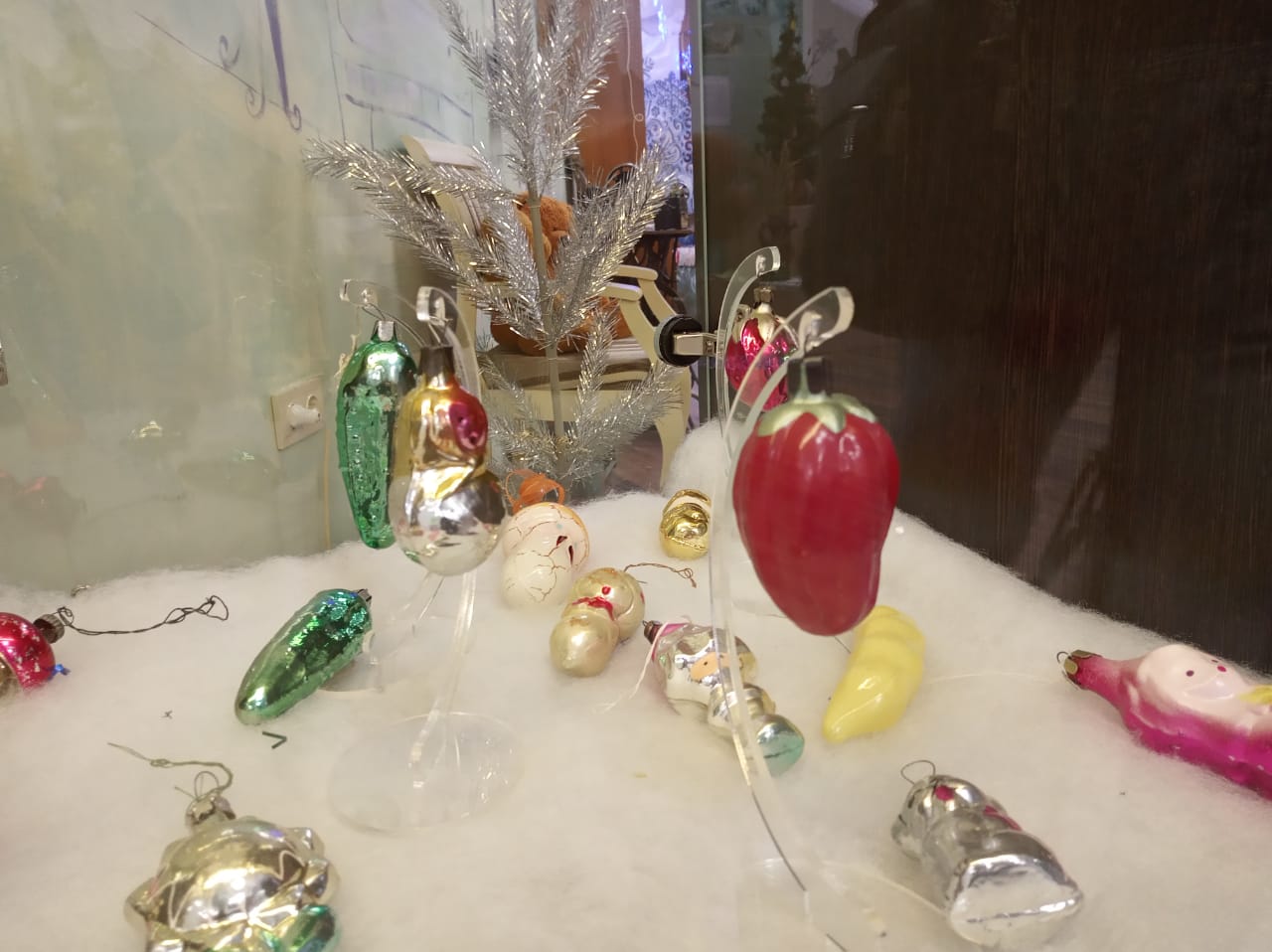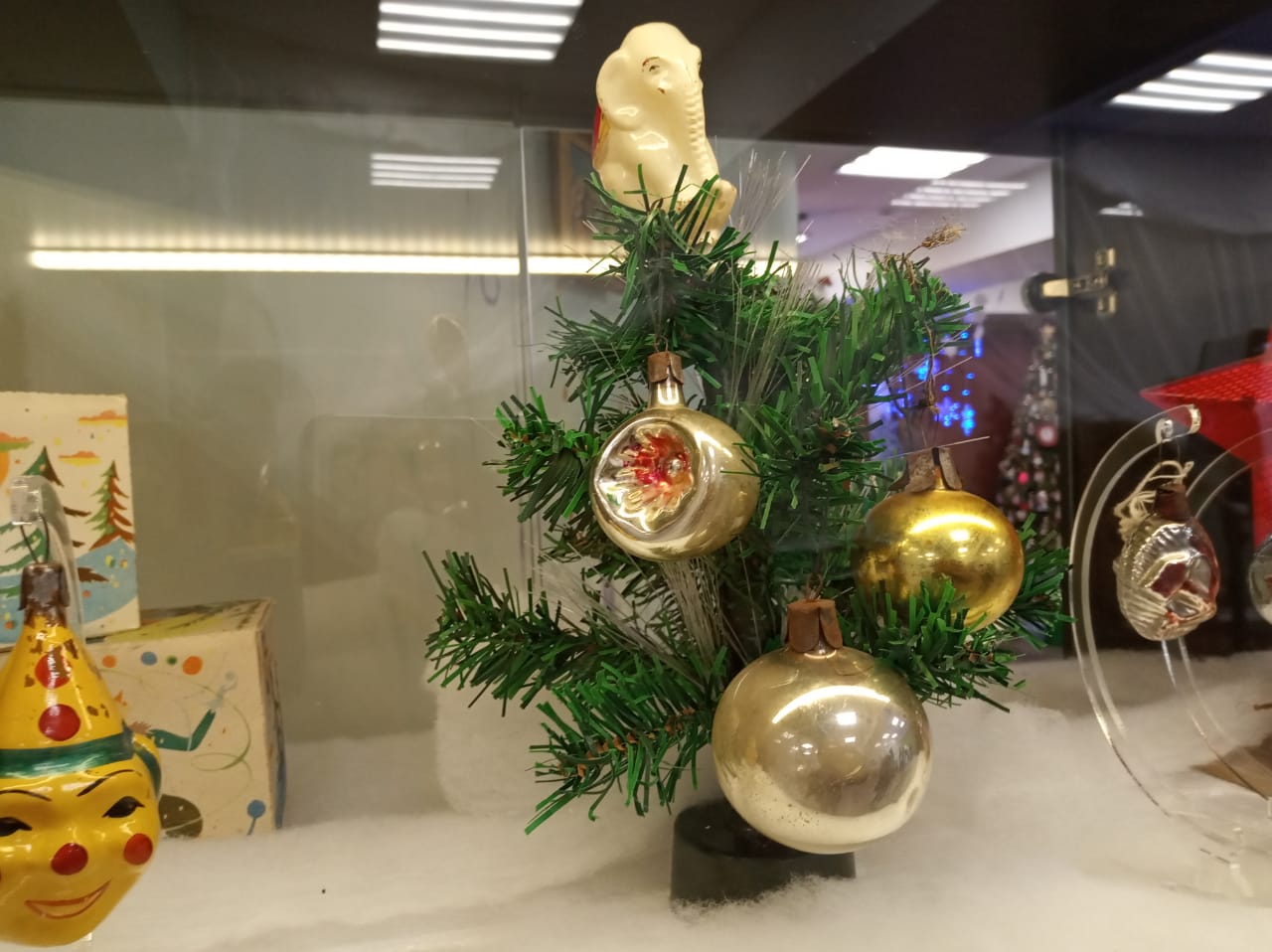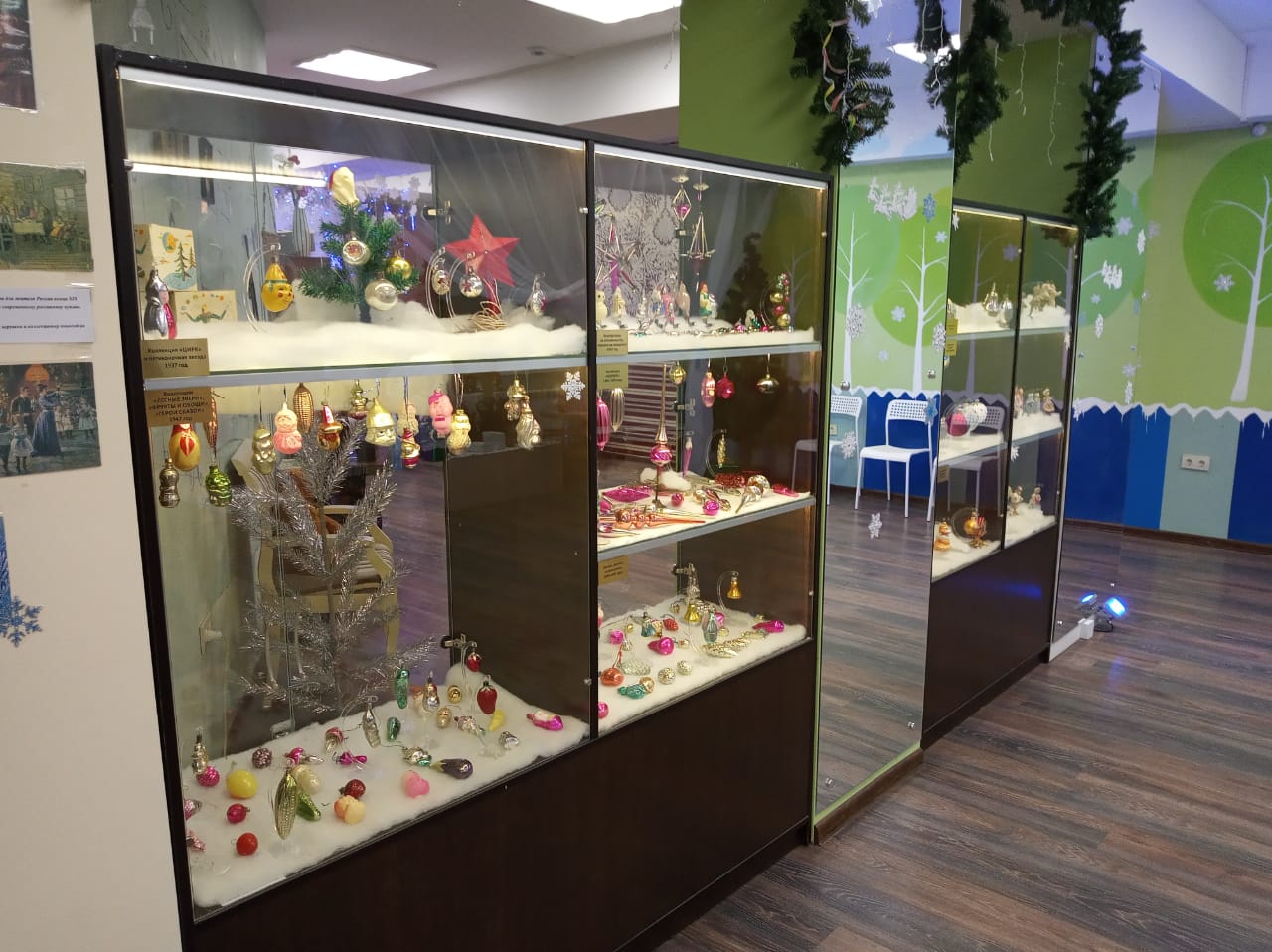On Tuesday, October 20, as part of a cross-regional expedition, the team of the Association of Private Museums of Russia visited the Museum of New Year Tree Decorations “Toy Factory” in Ryazan. The museum not only preserves the history of New Year tree decorations but also produces, though in small amounts, new glass toys in the museum workshop reviving the local ancient craft.
In 1925, our country banned Christmas celebrations, as the holiday was considered bourgeois. For the next ten years, children and adults were denied the opportunity to put up and decorate a Christmas tree, and get the presents. But in 1935, the New Year celebrations were allowed, and thus began the history of the Soviet New Year tree decorations, which reflected the entire history of our country. Svetlana Viktorovna Gusak, the guide of the Toy Factory Museum in Ryazan, told the team of the Association, what the Soviet toys looked like, how they evolved, and what ideas they reflected.
“In 1935, after the New Year celebrations were allowed, a series of toys was launched depicting Soviet symbols: a sickle, a hammer, Red Army soldiers, and, of course, the symbol of the revolution – a five-pointed red star. In 1937, after the film “Circus” appeared on the screens starring Liubov Orlova, a film that became Stalin’s favorite, a new line of toys named “Circus” – with its acrobats and clowns – was produced. In the early 50s, the production of stamped toys took off: cartoon characters were made to bring joy to children, and for adults, there were all kinds of veggies, berries, fruits, strawberries and cherries, cucumbers, lemons, tomatoes – all that symbolized the rich and comfortable life of the country. When Khrushchev began to plant corn, the corn cobs toys appeared”, Svetlana Viktorovna explains.
Considering the number of exhibits in the museum, the second half of the 1950s was the most productive era in terms of new toys. At the time a peg was introduced as a way to attach toys to the tree. Of course, the Soviet people loved it, because every Christmas tree had a place where it was almost impossible to hang a glass ball. That’s where the pegs came in handy.
Later a new series of toys made of tubular glass beads appeared. Tubes and glass balls strung together on a fishing line made beautiful hanging decorations. And surely there was a new popular tube star, that slowly replaced the red five-pointed star on its pedestal. Around the same time, the strings of beads were introduced. “The Soviet people liked the beads so much that sometimes you couldn’t see a single toy on a decorated tree, only beads,” Svetlana Viktorovna says.
In the 60s, Yuri Gagarin went to space and so the rocket-like toys were released: icicles, aircraft, and spire tree toppers. No one wanted to top the tree with a beautiful star anymore, everyone wanted to get a new beautiful topper – the spire. The exhibition clearly shows that the spires were produced in large numbers and all colors. In the 70s bells, houses, nuts, and cones tree ornaments reached their peak. Also, it became quite popular to sprinkle the tree with glass snow.
Ryazan is famous for its four handcrafts: Kadomsky veniz lace-making, Mikhailovsky lace-making, Skopinsky ceramics, and Shilov basketry. However, according to Svetlana Gusak, the lost art of glassmaking, once very popular in the Ryazan province can be called the fifth main craft of the province. The workshop at the Museum of New Year Tree Decorations “Toy factory” is doing its best to revive this magical and beautiful art. Glassblowers following the ancient traditions blow little balls out of glass gobs, then the balls are painted with colors and become real artworks – New Year tree or interior decorations.
“Toy Factory” Museum was admitted to the Association of Private Museums of Russia and will soon be included in the catalog of private museums. From October 11 to October 22, the team of the Association of Private Museums of Russia made a cross-regional expedition, visiting 19 private museums in nine Russian regions, traveled 3100 km, met a huge number of interesting people, opened new horizons for cooperation, and shared the fruits of their activities. Two new museums were admitted to the Association – the Borodin Museum & Smithy in Vladimir and the “Toy Factory” Museum in Ryazan.
